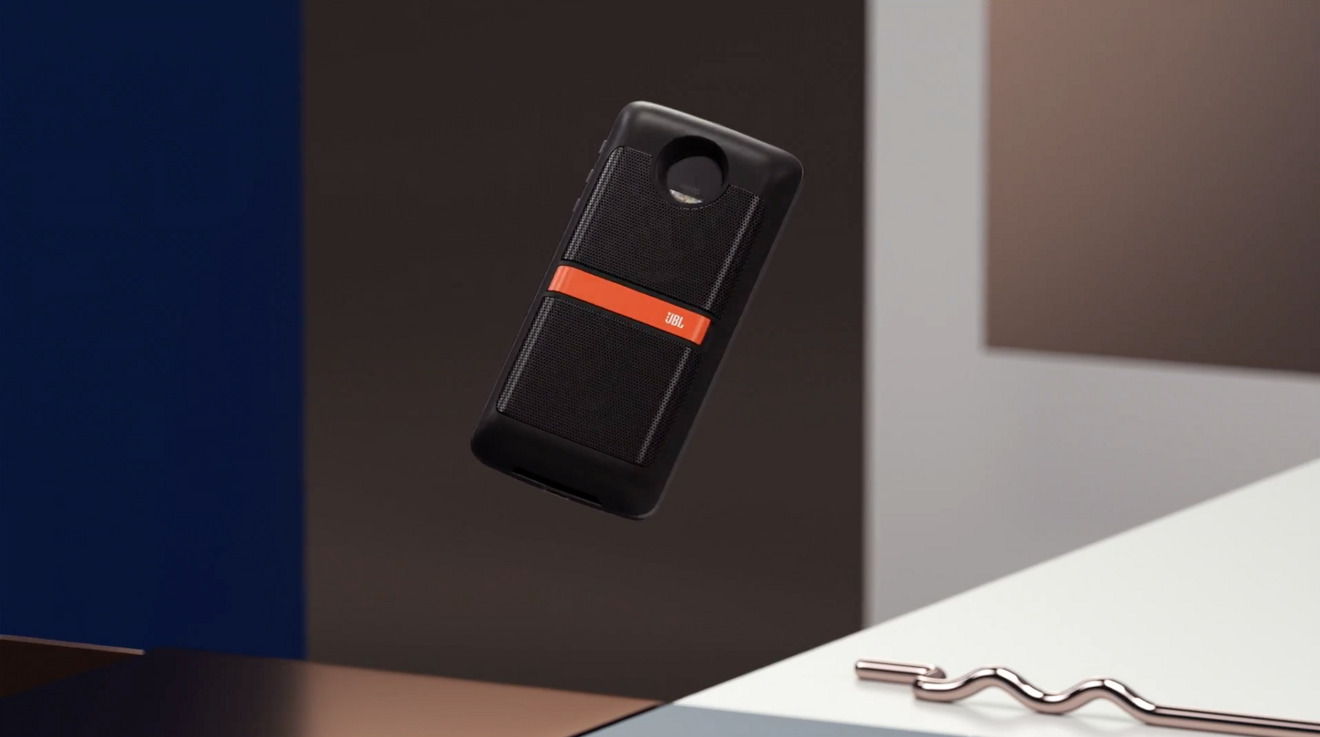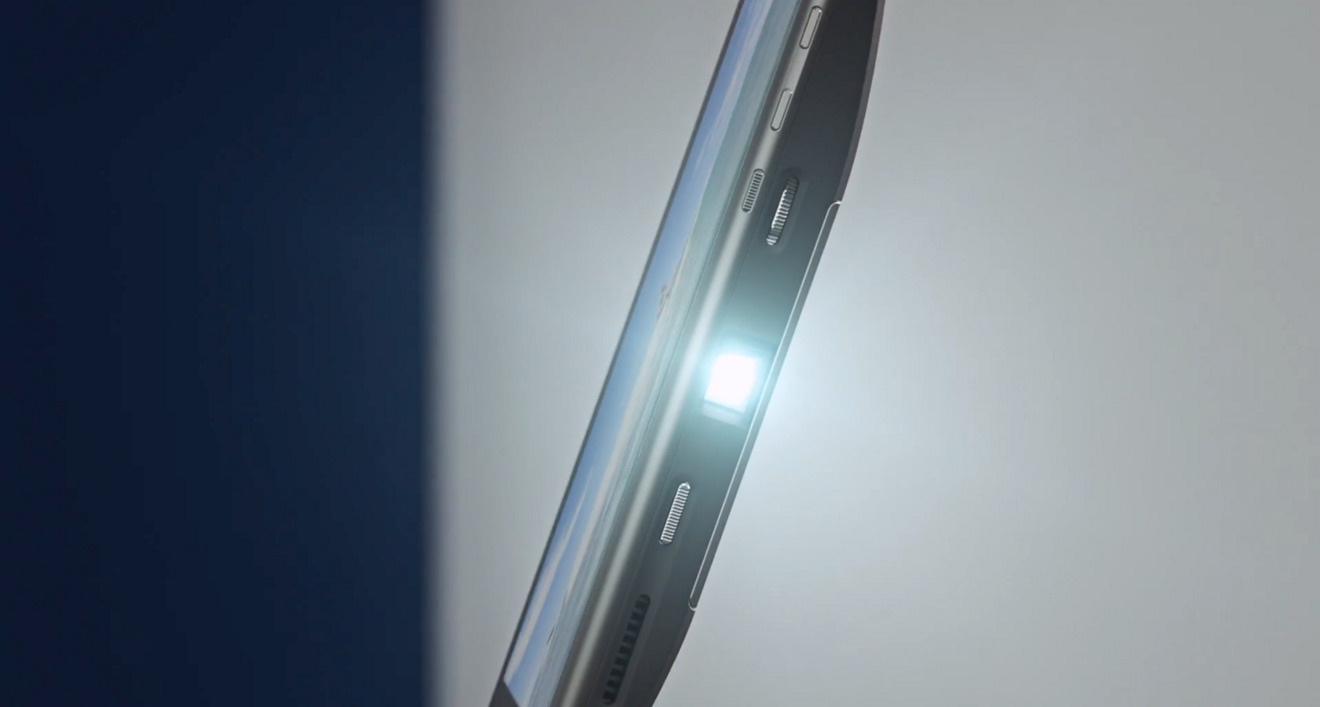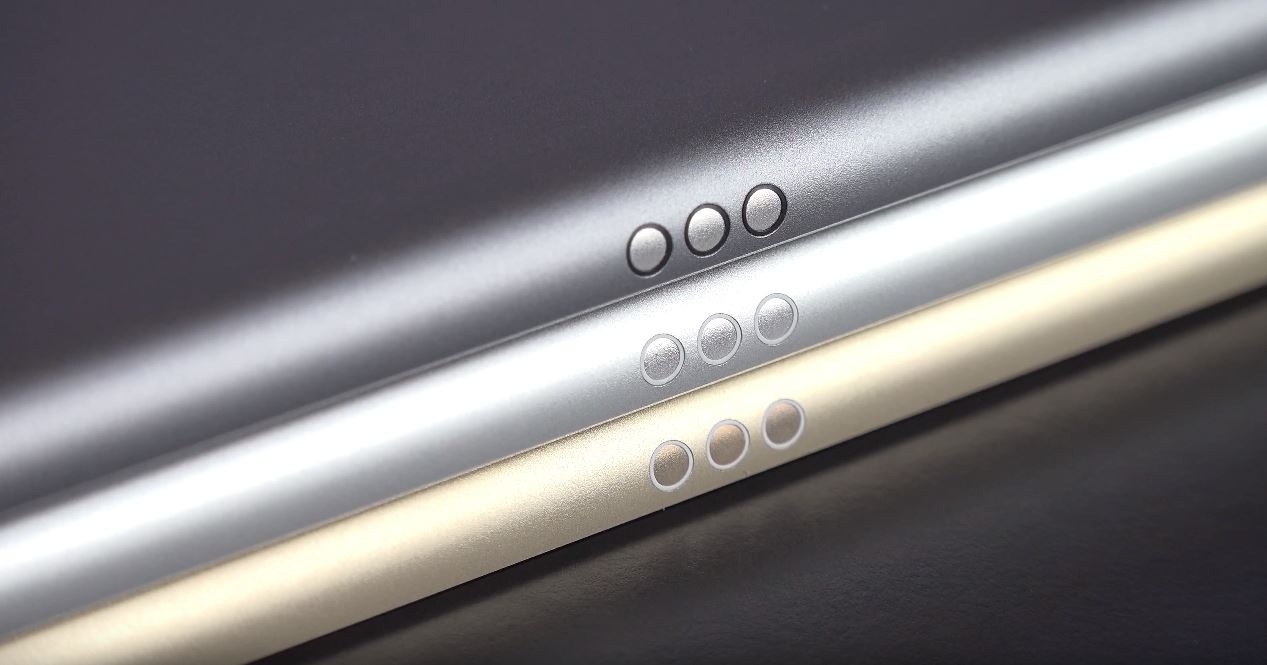Motorola's swappable 'Moto Mods' turn smartphones into projectors, loudspeakers, high-end cameras
In a push to reclaim some of the smartphone space dominated by Apple and Samsung, Lenovo-owned Motorola on Thursday unveiled a new hardware project called "Moto Mods," a series of swappable accessories that can bring new capabilities to the Moto Z line of handsets.
Moto Mods simply snap onto the back of the Moto Z, offering optional enhancements such as longer battery life or a portable loudspeaker. The program is also supported by an official development kit, meaning accessory makers will be able to create their own hardware attachments for the Moto Z.
In more advanced examples, Motorola showed off a snap-on projector that will allow users to display an image up to 70 inches in size from their Moto Z smartphone. The projector accessory also includes an hour of battery life before it taps into the battery on the phone itself.
In a presentation to the press, Motorola also teased that it would have camera-related improvements coming to the Moto Z in the form of Moto Mods. A loudspeaker attachment from JBL and a battery case from Incipio were also shown.
To stir up ideas among developers, Motorola showcased a number of Moto Mods concepts originating from the company's MotoLabs. They included a mod called "OneCompute," a docking station that would turn the Moto Z into a desktop computer with external monitor, speakers, mouse and keyboard.
Another concept, dubbed "SmartCast," showed a keyboard projected onto any flat surface, allowing users to type on a virtual full-size keyboard anywhere. And another idea, "Hypercharge," would allow a Moto Z to juice 85 percent of its battery in just 15 minutes.
Moto Mods are set to launch this September, at the same time that the Moto Z debuts globally. The handset will first launch this summer in the U.S. through Verizon, and will be available unlocked in America starting this fall.
The concept of quickly swappable and attachable accessories is something Apple has also shown interest in with the Smart Connector port found on both the 9.7- and 12.9-inch iPad Pros. The magnetic Smart Connector is capable of transferring both data and power, meaning it can be used to recharge an iPad Pro, or to send power to an external keyboard accessory.
Leaked parts and schematics for Apple's anticipated "iPhone 7 Plus" have shown the Smart Connector could be coming to Apple's next-generation 5.5-inch handset, expected to debut in September. In those leaks, the Smart Connector is shown located on the back of the device, toward the bottom, above the edge where the Lightning port is found.
How the Smart Connector might be used on an iPhone remains unknown, but its power-related capabilities could allow for users to recharge their iPhone while using wired headphones through the Lightning port, if Apple does in fact get rid of the 3.5-millimeter headphone jack. The magnetic capabilities of the Smart Connector could also enable simpler snap-on battery cases that wouldn't occupy the Lightning port either.
The concept of modular phones with optional accessories and upgrades is not new, with perhaps the most extreme example coming in the form of Google's delayed Project Ara. The search giant is working on a build-a-phone concept with swappable components, allowing users to upgrade individual parts — like the camera or processor — without having to buy an entirely new device.
 Neil Hughes
Neil Hughes













 Marko Zivkovic
Marko Zivkovic
 Amber Neely
Amber Neely
 Christine McKee
Christine McKee
 Malcolm Owen
Malcolm Owen
 Mike Wuerthele and Malcolm Owen
Mike Wuerthele and Malcolm Owen

 William Gallagher
William Gallagher








